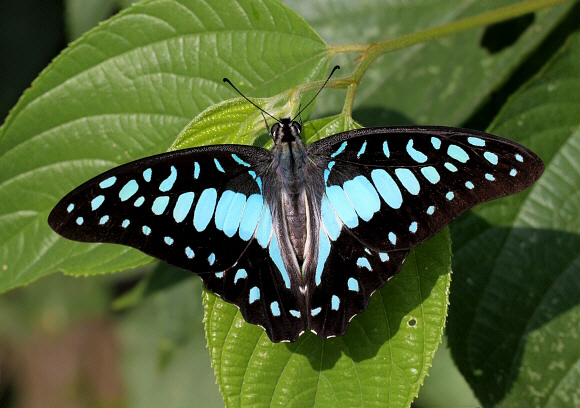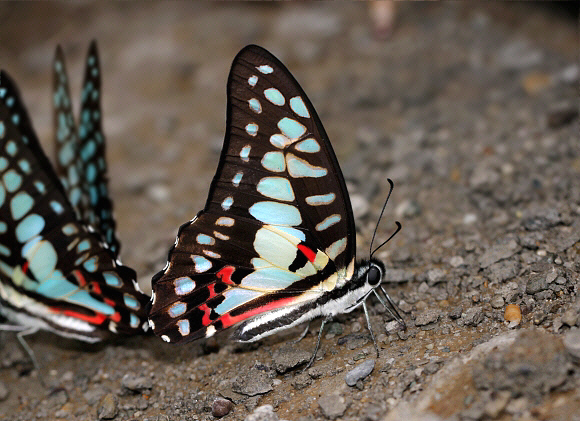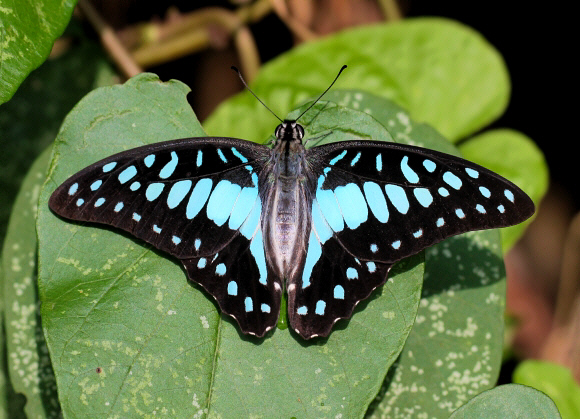
Introduction
The genus Graphium is widespread in the Old World, with 35 species in the Afrotropical region, 14 in the Oriental region, 6 in the Holarctic (south & west China), and 20 in the Australian region.
Almost all of the Oriental and Australasian species are characterized by the presence of a pattern of translucent green, turquoise, or yellowish ‘windows’ in their wings. Arguably the most beautiful and unusual of all the Graphium species is weiskei from Papua, which is patterned with vivid pink and green on a dark brown ground color. There are several species, however, such as antiphates and aristeus which have pure white uppersides, marked with prominent vertical black stripes. A few, including antiphates, aristeus, and the African policenes, have very long sword-like tails. Some of the Oriental species, e.g., codrus, cloanthus, and certain races of agamemnon, have short tails, but in others including sarpedon, doson, and eurypylus the tails are greatly reduced or absent.
Graphium doson is one of the most widespread and common of the Oriental species, found in India, Sri Lanka, Myanmar, Laos, Cambodia, China, Taiwan, Korea, Vietnam, Japan, the Philippines, West Malaysia, Sumatra, Borneo, Sulawesi, and Java.

Habitats
This species occurs in forested habitats at altitudes between sea level and about 1000m.

Lifecycle
The larvae feed on the foliage of a wide variety of trees and bushes including Desmos, Mitrephora, Rauwenhoffia, Uvaria, Annona, Polyalthia (Annonaceae), Cinnamomum (Lauraceae), Diploglottis (Sapindaceae), Michelia, and Magnolia (Magnoliaceae).
Adult behaviour
As with other Graphium species, doson males adopt the ‘filter-feeding’ technique – using their long proboscises to continually suck up water from which they extract sodium and other minerals. They constantly pump the water through their bodies, expelling the surplus from the anus, and using it to dissolve further minerals from the ground, which they re-imbibe. When feeding on the ground, the wings are normally held erect, but kept constantly quivering. It is common to find that almost all the butterflies in an aggregation face in the same direction – into the wind.
